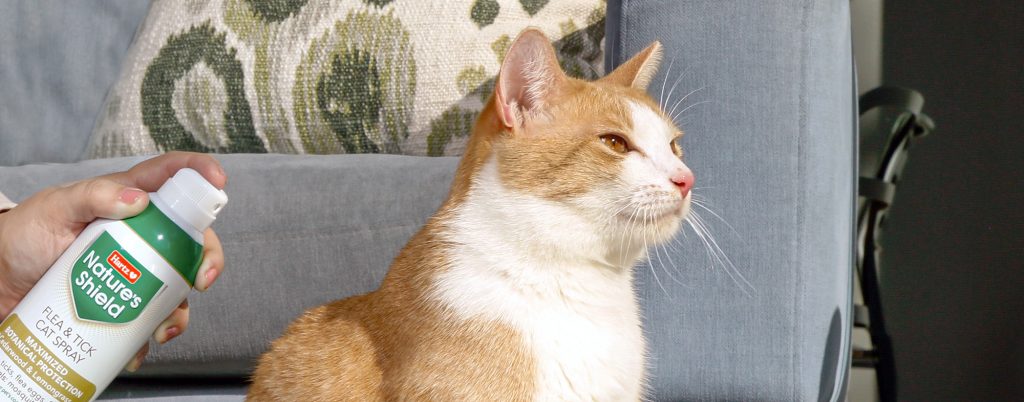Natural Techniques for Controlling Fleas and Ticks in Dogs and Cats

Understanding the Importance of Natural Pest Control
Keeping our beloved pets free from pests is a priority for every pet owner. Fleas and ticks are not just annoying nuisances; they can also lead to serious health issues for both dogs and cats. Fleas can cause allergic reactions, skin irritations, and transmit tapeworms, while ticks are notorious for spreading Lyme disease and other tick-borne illnesses. As caretakers, understanding natural techniques for controlling these pests is essential for maintaining the well-being of our furry friends.
The Advantages of Natural Solutions
More than just being safe and effective, natural solutions often avoid harmful chemicals that can affect pets and the environment. With rising concerns about pesticide exposure, many pet owners are seeking alternatives that are both gentle and efficient. Chemical treatments, though effective, can sometimes lead to adverse reactions in pets, ranging from mild skin irritations to severe neurological symptoms. Hence, natural methods present a compelling alternative.
Exploring the Top 5 Natural Techniques
This article will explore the top 5 natural techniques to combat fleas and ticks, enhancing your pet’s comfort and health. From essential oils to dietary supplements, these methods promise to keep pests at bay while ensuring a healthier lifestyle for your pets. Using items you might already have in your home or can easily procure, these techniques offer not just efficacy but also peace of mind.
1. Essential Oils
Essential oils like lavender, eucalyptus, and peppermint are renowned for their pest-repelling properties. When used correctly in diluted forms, they can be sprayed on pet bedding and living areas to deter fleas and ticks naturally. However, it is crucial to consult with a veterinarian before using essential oils, as some varieties can be harmful to pets.
2. Herbal Flea Collars
Herbal flea collars, infused with a blend of essential oils and herbs, provide a constant, natural deterrent against pests. They are a safer alternative to chemical-laden collars, offering protection while maintaining your pet’s health.

3. Natural Repellents in Pet Diet
Incorporating natural repellents like garlic and brewer’s yeast into your pet’s diet can enhance their natural defenses against fleas. These ingredients, when used appropriately, make the pet’s blood less palatable to pests.
4. Diatomaceous Earth
Diatomaceous earth is a powdery substance that damages the exoskeletons of
DISCOVER MORE: Click here to learn how to enrich your cat’s nightly routine
Top 5 Natural Techniques for Controlling Fleas and Ticks in Dogs and Cats
Fleas and ticks are notorious pests that no pet owner wishes to encounter. These tiny, persistent nuisances not only cause relentless itching and discomfort for our furry companions but can also lead to severe health issues such as skin infections, allergic reactions, and even diseases like Lyme disease and bartonellosis in pets. Given the plethora of chemical treatments available in the market, many pet owners are turning toward natural alternatives. These methods not only align with eco-friendly practices but also tend to be gentler on our pets. Let’s delve into the top five natural techniques that can effectively manage fleas and ticks, ensuring a healthier and happier life for our pets.
5. Essential Oil Repellents
Essential oils have surged in popularity as a natural means to repel fleas and ticks. These oils, extracted from various plants, are known for their insect-repelling properties. For instance, lavender with its soothing aroma can deter insects, while lemongrass and peppermint are lauded for their sharp scents that pests despise. Cedarwood, in particular, is recognized for its ability to suffocate insects.
When crafting your natural repellent spray, it’s vital to remember that not all essential oils are safe for every pet, especially cats. Always dilute these oils in a carrier oil or water, aiming for a safe concentration—often just a few drops in a spray bottle of water can be effective. It’s a good idea to conduct a patch test on a small area of your pet’s skin to ensure they won’t have an allergic reaction before full application.
4. Natural Flea and Tick Bath Solutions
Incorporating natural ingredients into your pet’s bath routine can be an effective method of dealing with fleas and ticks. A common household staple, apple cider vinegar, can be a powerful tool in this arsenal. Its acidic nature not only helps in eliminating fleas but also balances the pH level on your pet’s coat, fostering a less hospitable environment for parasites. Combine equal parts apple cider vinegar and water for a rinse or spray.
Additionally, aloe vera provides soothing relief from bites and can aid in healing the skin. Meanwhile, baking soda serves as a gentle abrasive that can alleviate itching while helping to remove fleas physically. For targeted treatment, mix baking soda with water to form a paste, apply to affected areas, and rinse after a few minutes. These baths not only cleanse your pets but also offer a preventive layer against infestations.
3. Diatomaceous Earth
Diatomaceous earth (DE), a natural mineral, is heralded for its efficacy in pest control. This fine, off-white powder is comprised of fossilized diatoms and is a potent killer of fleas and ticks. When these pests come into contact with DE, it dehydrates their exoskeletons, leading to their demise.
In using DE, it is crucial to choose the food-grade type to ensure safety for both pets and humans. Sprinkling DE onto your pet’s bedding, in the crevices of your home, and along their usual walking paths can help manage and prevent infestations. Remember to vacuum the area thoroughly after a few hours to remove any dead parasites and remaining DE.
2. Regular Grooming and Cleaning
An often underappreciated method of controlling fleas and ticks involves the basics: grooming and cleanliness. Regular grooming isn’t just about keeping your pet looking their best; it’s an opportunity to check for fleas, ticks, and their eggs. A fine-toothed flea comb can help to remove these pests from your pet’s coat efficiently. Pay close attention to areas like behind the ears and near the tail, where fleas are more prone to congregate.
Additionally, a clean living environment can drastically reduce the risk of infestations. Here are some steps to integrate cleaning rituals:
- Vacuum regularly to eliminate larvae and flea eggs from carpets and furniture.
- Wash pet bedding weekly in hot water to kill any hiding pests.
- Use insect-repelling sprays or powders in areas frequented by pets, without the use of harsh chemicals.
1. Natural Herbal Flea Collars
Topping our list is the use of natural herbal flea collars. These homemade collars serve as a continuous barrier against fleas and ticks. By integrating oils such as neem oil and dried herbs like lavender into a fabric collar, you create an environment inhospitable to fleas.
To craft your herbal flea collar, infuse a fabric collar with a few drops of diluted neem oil and embed dried herbs into the fabric. This combination not only keeps pests at bay but does so with style. Replace these collars every two to four weeks to maintain their effectiveness, ensuring your four-legged companion remains flea-free.
In conclusion, these natural methods provide safe, effective solutions to manage fleas and ticks, promoting a healthier life for our pets. By utilizing easily obtainable ingredients and adopting consistent care routines, we can safeguard our beloved animals in an eco-conscious manner. Take the time to explore these options further, and discover which combinations work best for you and your pets.
| Natural Technique | Description and Benefits |
|---|---|
| Essential Oils | Using essential oils such as lavender, cedarwood, and peppermint can effectively repel fleas and ticks. These natural scents deter pests while being pleasant for pets. Always ensure they are diluted appropriately and consulted with a veterinarian before application. |
| Diatomaceous Earth | This natural powder is made from fossilized algae and works by dehydrating and damaging the exoskeletons of fleas and ticks. Sprinkling food-grade diatomaceous earth in pet areas can help control infestations while being safe for pets. |
| Apple Cider Vinegar | A mixture of apple cider vinegar in your pet’s drinking water can create an environment that is unfavorable for parasites. Its acidity may help in preventing tick bites and flea infestations without harming your pet’s health. |
| Regular Grooming | Frequent brushing and bathing helps in removing loose fur and dirt where fleas and ticks may hide. This not only keeps pets clean but allows for early detection of infestations, reducing the need for stronger chemical solutions. |
This table highlights various natural techniques for flea and tick control, emphasizing their benefits and effectiveness. Each technique presents a unique approach to maintaining pet health without relying solely on commercial pesticides. Explore these options and consider how they align with your pet care routine.
DISCOVER MORE: Click here to learn how to help rescued dogs thrive outdoors
Frequently Asked Questions about Natural Techniques for Flea and Tick Control in Dogs and Cats
What are some effective natural remedies for controlling fleas and ticks in pets?
Nutritional approaches can play a significant role, like adding brewer’s yeast and garlic to your pet’s diet, which some believe repels these pests. Bathing your pet with lemon-infused water or apple cider vinegar can also create an unfavorable environment for fleas and ticks. Essential oils, such as lavender or eucalyptus, diluted appropriately, are popular for their pest-repellent properties.
Are natural flea and tick treatments safe for my pets?
While many people choose natural methods to minimize chemical exposure, it’s crucial to remember that some natural remedies can still be harmful if used improperly. Always research any treatment thoroughly and consult with a veterinarian, especially concerning the use of essential oils, which can be toxic if misapplied. Care should also be taken with ingredients like garlic, which in large amounts aren’t suitable for pets.
Do natural techniques take longer to control fleas and ticks than conventional methods?
Natural techniques might require more patience and persistence compared to conventional treatments. These methods often focus on prevention and management rather than immediate eradication. Regular application and maintenance are typically necessary. It’s fundamental to understand that each pet and environment is unique, so what works quickly for one might take longer for another.
Can environmental changes help prevent flea and tick infestations naturally?
Yes, enhancing your pet’s environment can be a powerful preventive step. Regularly washing pet bedding at high temperatures can eliminate larvae and eggs, while maintaining a clean living space reduces breeding grounds for fleas and ticks. You might also consider introducing plants like chrysanthemums or peppermint around your home, which are known to naturally deter these pests.
How can I recognize if a natural flea or tick treatment is working?
Monitor your pet for reduced signs of itching, scratching, and visible fleas or ticks. Regular checks with a flea comb can reveal if the infestation is decreasing. It’s important to remember that natural solutions often work best as part of a comprehensive plan, including routine checks and combination of methods for maintaining efficacy.
DISCOVER MORE: Click here to learn essential tips for hiking with your dog
Conclusion: Embracing Natural Methods for Flea and Tick Control
In our exploration of natural techniques for managing fleas and ticks in dogs and cats, we’ve unearthed several effective and holistic approaches. These methods not only safeguard our beloved pets but also align with environmentally conscious choices. The spotlight on natural flea and tick control is imperative, considering the potential health risks associated with chemical alternatives.
We’ve highlighted five key strategies for natural pest management. Essential oils, such as lavender and cedarwood, have proven to be potent repellents while also offering aromatherapeutic benefits for pets and owners alike. The use of diatomaceous earth, a natural powder, provides a non-toxic solution to eradicating pests in living environments. Herbal concoctions, consisting of rosemary and chamomile, serve as both deterrents and soothing treatments for irritated skin.
Additionally, maintaining a regular grooming routine facilitates the early detection and removal of these parasites, preventing serious infestations. Nutrition also plays a crucial role, as a healthy diet strengthens a pet’s immune system, making them less attractive to fleas and ticks. These methods collectively ensure a comprehensive and safe approach to pest control.
The significance of these natural alternatives extends beyond just health benefits to pets; it involves a deeper understanding of how we interact with our environment. As more pet owners turn towards eco-friendly solutions, these techniques become increasingly vital. The ongoing dedication to discovering and sharing such information is crucial for the continued well-being of our furry companions.
In embracing these practices, we are not only protecting our pets but also contributing positively to ecological sustainability. The journey to understanding and utilizing natural pest control methods is an ongoing one, encouraging us to continually educate ourselves and deepen our commitment to the health and happiness of our pets and our planet.


